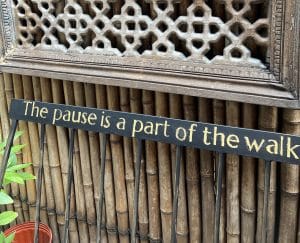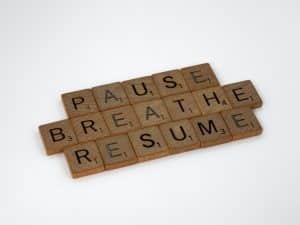
This week we got into indecision, and the occasional conflict between decisions that “make sense” but also make us happy. In my experience, the struggle of those moments is often marked by one critical, missing ingredient: intuition.
More often than not, tough decisions are about the push-pull of your emotions versus your intellect – what you want, and what you think you “should” do. As those two sides take each other on, a third perspective may be quietly trying to be heard. Intuition is the alignment of your “feel” and your “think.” It’s a part of you that knows both what you want and why it would be best for you. Trouble is, it can be wicked hard to hear underneath all that internal noise already underway.
So for this weekend’s mindfulness challenge, we’re going to give it a chance to grab the mic.
- First thing’s first, you need to commit a little slice of your day. Set aside a few minutes, even just five or so, to practice a little mindfulness. Whether you want to move a little by taking a mindful walk or a little yoga, or you’re ready to take a beat and catch your breath, dedicate the time.
- Once you’re in your mindful zone (or making your best effort to be there), connect with your point of focus. It may be your breath if you’ve chosen a breathing meditation, your body or your natural surroundings if you’ve chosen a walk, or a combination of both if you’re doing yoga or another physical activity. If you’re working through a decision, you may place the intention of gaining clarity around it (which is different from “Tell me what to do!!”). Or, you may choose to abandon it for a while. You’ll have plenty of other things trying to grab your attention.
- As you settle in, you will – likely without fail – begin to notice internal distractions trying to pull you away. Thoughts of all shapes and sizes will arrive, trying to engage you in stories large and small on topics from dinner to your goals and dreams. When they do, it’s ok.
Telling your brain to stop thinking is like telling your ears to stop hearing. Thinking is what is does. The key here, for these few minutes, is to see those thoughts, and without trying to wrestle them into oblivion, set them aside. You can even internally tell yourself, “That’s thinking” as you turn away from it and return your focus to your breath, or other anchor.
If you do this constantly for your entire meditation practice, that’s still ok. The coming back – returning your focus – is the meditation. That’s the work. That’s what makes your ability to focus stronger.
As you engage in this practice, you may also find that it’s not just thoughts that try to pull you away. Emotions often also bubble up, sometimes attached to thoughts, and sometimes on their own. If this happens to you, try the same approach: label them and set them aside. Instead of diving in, immersing yourself in the feeling, try your best to notice that it’s there, and for a minute, look back to your anchor.
Now, this may sound like a tough challenge and it is, but it’s also a foundational skill of mindfulness. It enables you to develop the ability to observe your thoughts and emotions without attaching yourself to them, which is ultimately what allows you to choose how you respond to them. It also may, over time, give you the space to hear that third voice of intuition, and use it as you make your choices throughout your day, and your life.
Every moment of every day is a choice. The more you develop the ability to connect with your internal self, and get to know the patterns of thought and emotion that have quietly established themselves within you over time, the more likely you are to hear your intuition when it tells you that it’s time to make a shift. Perhaps even more importantly, you will be all the more likely to trust it when it does.
Photo credit: Corinne Kutz



